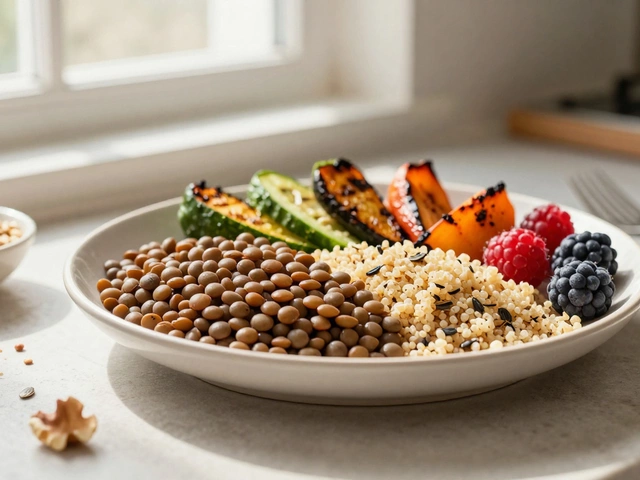Trans Fats Explained: What They Are and Why They Matter
Ever wonder why food labels shout "no trans fats"? It’s because these fats can hurt your heart and raise bad cholesterol. Understanding trans fats helps you make smarter food choices.
Where Trans Fats Hide
Most trans fats are created when manufacturers add hydrogen to liquid oils, turning them solid. You’ll find them in:
- Packaged cookies, crackers, and chips
- Microwave popcorn
- Fast‑food fries and fried chicken
- Some margarines and shortenings
Even if a product says "zero trans fat," check the ingredient list for "partially hydrogenated oil." That wording means trans fats are still there.
How Trans Fats Affect Your Body
Trans fats raise LDL (the bad cholesterol) and lower HDL (the good cholesterol). This double hit can clog arteries faster, increasing the risk of heart disease and stroke. They also promote inflammation, which can worsen conditions like diabetes.
Studies show people who eat just a few grams of trans fats a day have a higher chance of heart problems than those who avoid them. The impact is real and measurable.
If you’re watching your weight, trans fats can make it harder. They’re calorie dense and don’t give you the feeling of fullness that healthier fats do, leading to extra snacking.
Simple Ways to Cut Trans Fats
Start by reading labels. Look for "0g trans fat" and make sure the ingredient list doesn't include partially hydrogenated oils. Choose whole foods whenever possible – fresh fruit, veggies, nuts, and lean proteins are naturally free of trans fats.
Swap out processed snacks for homemade versions. Baking your own cookies lets you control the fat type; use olive oil or butter instead of shortening.
When eating out, ask if the kitchen uses partially hydrogenated oil. Many restaurants have moved to healthier oils, but it never hurts to confirm.
Cooking at home gives you the most control. Use oils with a high smoke point, like canola or sunflower, and avoid reusing oil multiple times.
What Nutrition Guidelines Say
Health agencies in the US, UK, and EU recommend keeping trans fat intake as low as possible – ideally under 1% of total daily calories. Some countries have even banned them in restaurants.
Following these guidelines doesn’t mean you have to give up all tasty foods. It just means picking options that use healthier fats.
Remember, cutting trans fats is a small step that adds up. Your heart, waistline, and overall health will thank you.
Ready to start? Next time you shop, grab the label, skip the partially hydrogenated oil, and enjoy meals that fuel you without the hidden danger of trans fats.

Three Foods to Quit for Better Health
by Landon Weathers / 18 Jun 2025Are you wondering which foods secretly sabotage your health? This article breaks down the top three foods to quit for good health and why they’re so dangerous. You'll learn how these foods sneak into your meals, the problems they cause, and practical tips to replace them. Plus, get insight into what actually happens in your body when you cut them out. Three swaps could make eating healthy much simpler.




